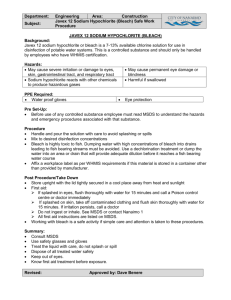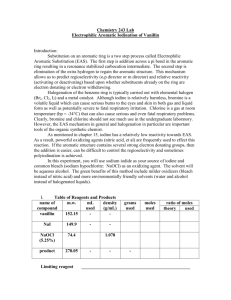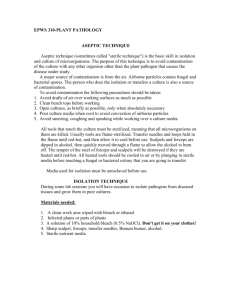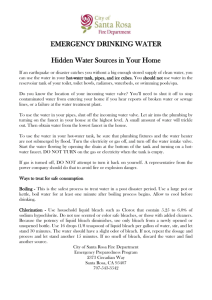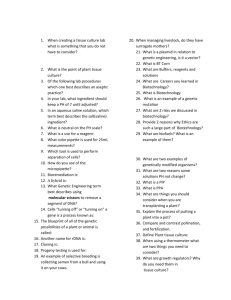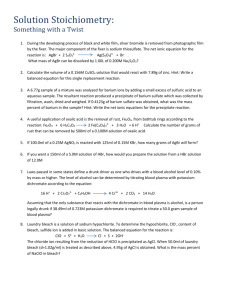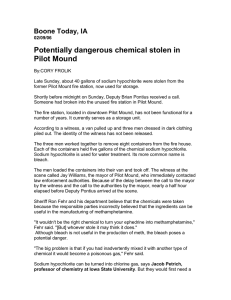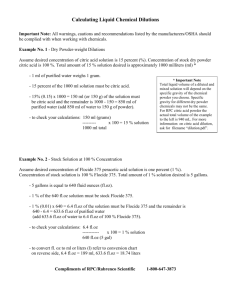9 root surface sterilization
advertisement
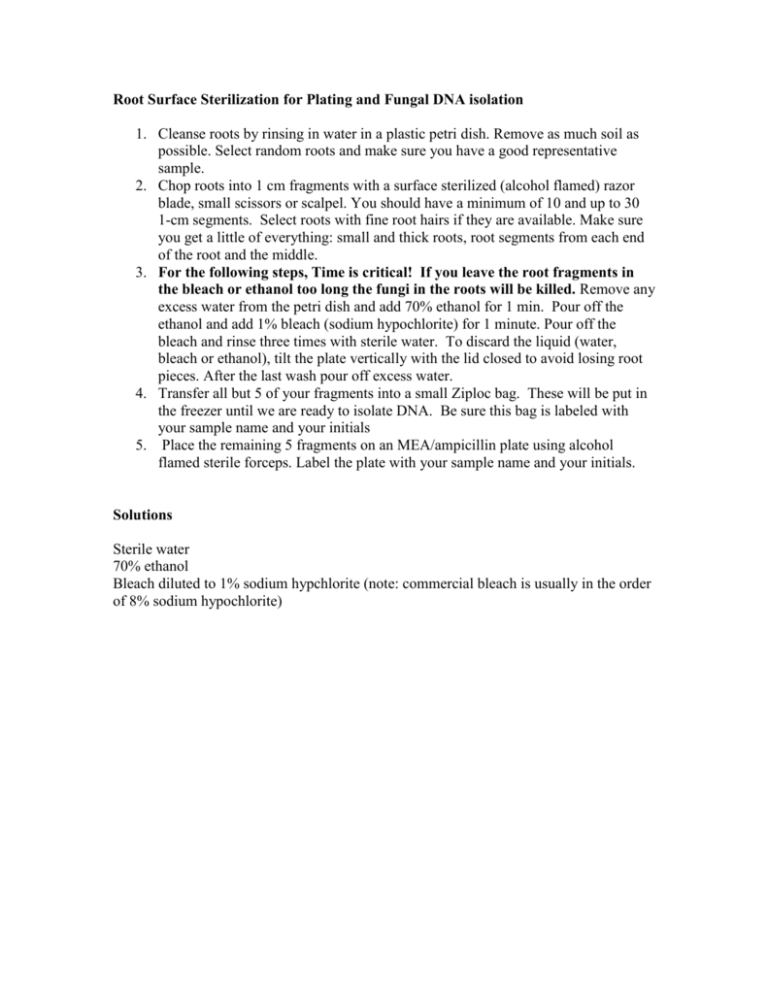
Root Surface Sterilization for Plating and Fungal DNA isolation 1. Cleanse roots by rinsing in water in a plastic petri dish. Remove as much soil as possible. Select random roots and make sure you have a good representative sample. 2. Chop roots into 1 cm fragments with a surface sterilized (alcohol flamed) razor blade, small scissors or scalpel. You should have a minimum of 10 and up to 30 1-cm segments. Select roots with fine root hairs if they are available. Make sure you get a little of everything: small and thick roots, root segments from each end of the root and the middle. 3. For the following steps, Time is critical! If you leave the root fragments in the bleach or ethanol too long the fungi in the roots will be killed. Remove any excess water from the petri dish and add 70% ethanol for 1 min. Pour off the ethanol and add 1% bleach (sodium hypochlorite) for 1 minute. Pour off the bleach and rinse three times with sterile water. To discard the liquid (water, bleach or ethanol), tilt the plate vertically with the lid closed to avoid losing root pieces. After the last wash pour off excess water. 4. Transfer all but 5 of your fragments into a small Ziploc bag. These will be put in the freezer until we are ready to isolate DNA. Be sure this bag is labeled with your sample name and your initials 5. Place the remaining 5 fragments on an MEA/ampicillin plate using alcohol flamed sterile forceps. Label the plate with your sample name and your initials. Solutions Sterile water 70% ethanol Bleach diluted to 1% sodium hypchlorite (note: commercial bleach is usually in the order of 8% sodium hypochlorite)
